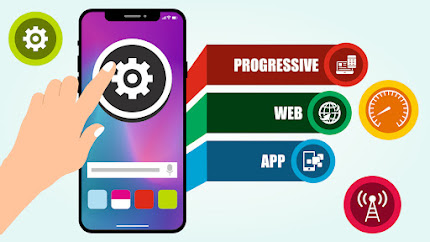Progressive Web Apps: Going Beyond the Basics
Introduction
Progressive Web Apps (PWAs) have
quickly become a cornerstone of modern web development,
offering an enhanced user experience by combining the best features of web and
mobile applications. While the basics of PWAs provide a solid foundation, going
beyond these fundamentals can unlock even greater potential. This blog explores
advanced concepts and strategies to elevate your PWA to the next level.
Beyond Basic Features:
Advanced PWA Capabilities
- Advanced Caching Strategies While basic PWAs
cache essential resources for offline use, advanced strategies involve
selective caching and dynamic updates. Using tools like Workbox,
developers can create fine-tuned caching policies that balance performance
and data freshness. This ensures users always have the latest content
without compromising on speed.
- Background Sync PWAs can go beyond simple
offline functionality by incorporating background sync capabilities. This
allows the app to synchronize data in the background when the user is
offline, ensuring that any changes made are automatically updated once
connectivity is restored. This is particularly useful for applications
that require real-time data updates.
- Push Notifications with Personalization Push
notifications are a powerful tool for re-engaging users, but advanced PWAs
take this a step further by incorporating personalized notifications. By
leveraging user data and behavior patterns, developers can send tailored
messages that are more likely to resonate with users, improving engagement
and retention rates.
- Enhanced Security Measures Security is crucial
for any web application, and PWAs are no exception. Advanced PWAs
implement robust security measures such as HTTPS, Content Security Policy
(CSP), and Service Worker security. These practices help protect user
data, prevent unauthorized access, and ensure a secure browsing
experience.
- Native-Like Functionality with Web APIs Modern
Web APIs allow PWAs to mimic native app functionality closely. Features
like geolocation, camera access, and payment processing can be integrated
into your PWA, providing a rich user experience without needing to develop
a separate native application.
Advanced Design Considerations
- Responsive and Adaptive Design Going beyond
basic responsive design, advanced PWAs incorporate adaptive design
principles to tailor the user experience based on the device and context.
This means not just adjusting layout but also optimizing functionality and
performance for different devices and network conditions.
- Progressive Enhancement Instead of delivering
a one-size-fits-all solution, advanced PWAs use progressive enhancement
techniques to provide an optimal experience based on the user's browser
capabilities. This ensures that even users with older devices or less
capable browsers can access and use the application effectively.
- Accessibility Enhancements Accessibility is
key to reaching a broader audience. Advanced PWAs adhere to WCAG
guidelines and go beyond basic accessibility features by implementing
solutions like ARIA roles, focus management, and keyboard navigation. This
ensures that all users, regardless of ability, can navigate and interact
with your app effectively.
Performance Optimization
Techniques
- Code Splitting and Lazy Loading Advanced PWAs
improve performance by using code splitting and lazy loading to deliver
only the necessary resources initially. This reduces initial load times
and ensures that additional content is loaded on demand, resulting in a
faster and more efficient user experience.
- Progressive Image Loading Instead of loading
all images at once, progressive image loading techniques allow for the
loading of lower-resolution images first, followed by higher-resolution
images as needed. This improves perceived performance and provides a
smoother experience for users on slower connections.
- Critical Rendering Path Optimization By
minimizing render-blocking resources and optimizing the critical rendering
path, advanced PWAs ensure that the most crucial content is displayed to
users as quickly as possible. This enhances the perceived performance and
responsiveness of the application.
Conclusion
Progressive Web Apps have moved
beyond their initial promise of combining web and mobile app functionalities.
By exploring advanced capabilities and design principles, developers can create
PWAs that not only meet but exceed user expectations. Embracing these advanced
strategies ensures that your PWA stands out in a crowded digital landscape,
offering an unparalleled user experience that keeps users engaged and coming
back for more.



Comments
Post a Comment